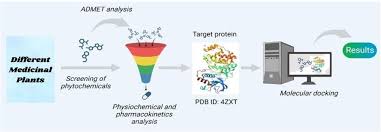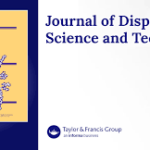n the modern scientific landscape, the boundaries between various fields of research are becoming increasingly blurred. Many of today’s most pressing challenges—whether in healthcare, environmental science, or technology—require solutions that integrate multiple areas of expertise. This is where journals like the Journal of Integrated Science and Technology (JIST) play a crucial role. Dedicated to publishing interdisciplinary research, JIST serves as a key platform for scholars, innovators, and practitioners aiming to combine diverse scientific knowledge to address complex problems. In this article, we explore the significance of JIST, the trends shaping integrated science, and its impact on various industries and scientific disciplines.
What is Integrated Science and Technology?
Integrated Science and Technology is an interdisciplinary approach to scientific research and development that combines knowledge from multiple scientific fields to solve complex problems. This approach emphasizes collaboration and the fusion of ideas from diverse domains, enabling researchers to tackle challenges that single disciplines may struggle to address effectively.
Integrated science and technology has applications in numerous sectors, including:
- Healthcare and Medicine: Combining biology, chemistry, physics, and engineering to develop advanced medical treatments and devices.
- Environmental Science: Integrating biology, chemistry, and environmental engineering to solve problems such as pollution and climate change.
- Engineering and Materials Science: Merging principles of physics, chemistry, and engineering to create innovative materials and technologies.
- Data Science and Artificial Intelligence: Fusing computer science, statistics, and domain-specific expertise to create smarter algorithms and systems.
By synthesizing insights from different scientific fields, integrated science enables breakthroughs that would be difficult, if not impossible, to achieve within the confines of a single discipline.
The Role of the Journal of Integrated Science and Technology (JIST)
The Journal of Integrated Science and Technology serves as a critical platform for the publication of cutting-edge research that combines multiple scientific fields. The journal is dedicated to disseminating high-quality, interdisciplinary studies that foster collaboration among scientists, engineers, and innovators. It encourages research that addresses real-world problems, offering solutions that draw from various scientific domains.
JIST is important for several reasons:
- Promoting Interdisciplinary Research: It provides a space for scholars from different disciplines to share their findings, leading to the creation of innovative solutions that may not arise within isolated fields.
- Encouraging Collaboration: Through the publication of interdisciplinary work, JIST fosters collaboration between researchers, industries, and policymakers, paving the way for the practical application of scientific knowledge.
- Global Impact: The journal reaches a worldwide audience, ensuring that important research is shared with scientists and professionals across the globe.
- Diverse Applications: It publishes research from a wide range of sectors, including engineering, healthcare, environmental science, and information technology, making it relevant to a broad spectrum of industries.
Key Focus Areas in Integrated Science and Technology
Integrated science and technology span a wide array of subjects and industries. Below are some of the key areas of focus that are regularly featured in the Journal of Integrated Science and Technology.
1. Healthcare and Biomedical Engineering
The integration of biology, medicine, and engineering has led to some of the most transformative innovations in healthcare. Research published in JIST often explores how technology can improve diagnostics, treatments, and patient care. This includes the development of advanced medical devices, new drug delivery systems, and biotechnology solutions.
One notable area of focus is biomedical imaging, where principles from physics and engineering are used to create more advanced imaging systems, such as MRI and CT scanners, which provide critical information for diagnosing diseases. Another key area is personalized medicine, which combines genomics, data science, and pharmacology to tailor treatments to individual patients, enhancing the effectiveness of medical interventions.
2. Environmental Science and Sustainability
Integrated science plays a significant role in addressing environmental challenges. JIST frequently publishes research on sustainable technologies that merge environmental science, chemistry, and engineering to reduce the impact of human activities on the planet. This includes research on renewable energy sources, such as solar and wind power, as well as technologies for carbon capture and storage.
Additionally, the journal covers environmental monitoring using integrated sensors and data analytics to track pollution levels, track climate change, and predict natural disasters. Researchers also work on developing sustainable materials that have less environmental impact throughout their lifecycle.
3. Materials Science and Nanotechnology
Materials science is inherently interdisciplinary, combining physics, chemistry, and engineering to create new materials with unique properties. Research published in JIST often explores innovative materials that are designed to address challenges in industries such as electronics, construction, and energy storage.
Nanotechnology, which involves manipulating materials at the atomic or molecular scale, is a key focus area within materials science. Nanomaterials have the potential to revolutionize many industries by making devices smaller, lighter, more efficient, and more durable. JIST features research that combines knowledge from chemistry, physics, and engineering to design novel nanomaterials for a range of applications, from drug delivery to energy storage.
4. Data Science and Artificial Intelligence
In the digital age, the integration of computer science, mathematics, and domain-specific knowledge has led to the rise of data science and artificial intelligence (AI). The Journal of Integrated Science and Technology publishes research that examines how data analytics and AI can be used to solve complex problems across various sectors.
For instance, AI can be used in healthcare to predict patient outcomes, personalize treatment plans, and analyze medical imaging. In environmental science, AI and machine learning algorithms are used to model climate change, predict pollution levels, and optimize the use of natural resources. Big data and machine learning techniques are also applied to fields like finance, where they are used to detect fraud, optimize investment strategies, and predict market trends.
5. Smart Cities and Urban Planning
The rise of smart cities—urban areas that use digital technologies to improve infrastructure and quality of life—has created new opportunities for integrated research. The combination of engineering, computer science, urban planning, and environmental science is essential to building cities that are efficient, sustainable, and resilient.
Research in this area focuses on developing smart infrastructure systems such as traffic management, energy-efficient buildings, waste management, and water distribution. Additionally, integrated data collection and analysis from sensors embedded throughout cities enable real-time decision-making that can improve urban living.
The Future of Integrated Science and Technology
As the world faces increasingly complex challenges, integrated science will become even more critical. Issues such as climate change, global health crises, and technological advancements require a multidisciplinary approach. The Journal of Integrated Science and Technology will continue to be an essential platform for research that encourages collaboration between diverse scientific fields, leading to innovative solutions for global problems.
The future of JIST will likely involve even greater collaborations between scientists, engineers, and policymakers, with the goal of creating practical, sustainable technologies. As new technologies such as quantum computing, biotechnology, and the Internet of Things (IoT) advance, they will open new avenues for integrated research that will redefine the way we approach problem-solving across disciplines.
Conclusion
The Journal of Integrated Science and Technology is a vital resource for researchers, professionals, and innovators working at the intersection of multiple scientific fields. By promoting interdisciplinary research, JIST enables the development of cutting-edge solutions to some of the world’s most pressing challenges. From healthcare to environmental sustainability, smart cities to data science, the journal covers a wide range of topics that are critical to shaping the future of science and technology. As the scientific landscape continues to evolve, integrated science will undoubtedly remain at the forefront of innovation, and JIST will continue to be a key driver in advancing this transformative field.


